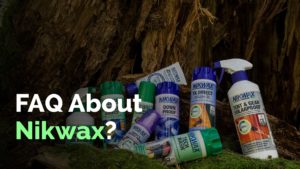

Do tents leak when it rains?
For those of us who enjoy the serenity of the outdoors, we know that mother nature also comes with unexpected elements. Sometimes, nature reciprocates our love for it in different ways by sending a shower our way.
When this happens, we think we can hide in the safety and comfort of our tents, but sometimes it disappoints when a leak happens.
The worst part is when the tent was recently bought so it is a wonder why there are still leakages. There can be many reasons as to why a tent leaks when it rains. Here, we will be covering five of them and the preventative measures to allay these issues.
In fact, after being away for this last week (end of July start of August 2023) we have had to add a Sixth reason.
Touching the interior of the tent
Something unbeknownst to most people is that one can easily cause leakage by simply touching the inner walls of a tent on a rainy day. This is because when one touches the inner walls, the water droplets that gather lose their surface tension which causes them to seep through the tent fabric. Whether intentional or not, this can easily cause a leakage.
Solution: Create more space in the tent
If you are touching the inner walls intentionally, it is recommended that you refrain from doing so. However, if this is happening accidentally, it might be time to relook at the space in your tent. If the option to buy a bigger tent is not a viable one for you, you can always look at reorganising all the equipment in the tent. That is to say, make sure that nothing is leaning against the wall of the tent which would lead to the issue of surface tension being lost. So, a simple solution is to simply reorganise your items to cut the problem at its root.
Wear and tear of the Polyurethane (PU) coating
Like all things, everything is prone to wear and tear. This includes the waterproof coating on our tents. The Polyurethane coating is what makes the tent water-resistant. The coating can easily wear off due to negligence of equipment maintenance or simply as a result of long years of service which is hard to prevent.
Solution: Use waterproofing liquid instead
The simple solution to this problem is to obtain waterproofing liquid which is easily available at any camp gear store. We cannot control the Polyurethane coating from waning away so what we can do is to reproofing the outer layer of the tent ourselves. When reproofing, remember to do it on a sunny day so that the liquid can dry up faster. Simply apply the liquid as per the manufacturer’s guide.
Wear and tear of the seams
Just like how the Polyurethane coating can wear out, the seams of the tent are also in a similar situation. The seams connecting the walls of the tent are joined together using a special tape in order to enhance its water resistance. This tape can lose its effectiveness over time which causes gaps that can allow water droplets to infiltrate. So, if you notice that the wet spots are occurring frequently near the seams, this might be the reason why.
Solution: Use some commercial seam sealant
While it may seem like there is no solution but to toss out the old tent to get a replacement, we are here to tell you that there might be a less costly and sustainable option that allows you to reuse your old tent. This sealant can easily be found in any store that specialises in camping equipment. You have to pitch up your tent before using this product so that you can properly apply the liquid along the seams. Once you have done so, you can just leave your tent in the open for the air and sun to dry it up.
Rips at the base of the tent
Whenever we set up our tents, we set them up over grass patches as they provide more cushioning. Many times, we neglect to inspect the area where we are planning to pitch our tent which results in people setting up tents over sharp objects like rocks and sticks that threaten to shred the base of the tent. When a tear does happen, this can result in rainwater flowing in from the bottom.
Solution: Utilise footprints to prevent tears
Before you think of using your feet to do this, do note that footprints are actual camping equipment that serves as a protective layer for the base of your tent. It basically prevents the sharp objects from tearing into the fabric at the base of the tent. Furthermore, it also helps by preventing water from flowing in from the ground after the rain is absorbed by the grass.
Water droplets from a difference in temperature
While this is something that can be less controlled by us, condensation can occur in a tent when it is a rainy day because of the difference in temperatures between the outdoors and the indoors. The inside of the tent can be heated up by our body temperature and the warm air in the tent will condense on the inner walls of the tent that has been cooled by the outside environment.
Solution: Have more ventilation and tarps
It might seem like a hopeless situation because the only solution seems to be to stop breathing. On the contrary, all you have to do is purchase tents with more vents so that the warm air has an outlet to rise out of instead of having everything condense within. Of course, having vents might also mean that rain can easily enter the tent. This can be resolved by purchasing some tarps to be used as a shelter for the tent. The vent will prevent internal condensation and the tarp will keep out the external raindrops which will keep you relatively dry.
Too much rain
I’ve never experienced rain as heavy as I did on the last weekend in July. In the space of two hours, we had so much rain that the tent material became waterlogged. Even though tents are designed to withstand rain, they have their limits. A month’s worth of rain in a few hours is simply too much.
Solution: not alot
There’s not much you can do in this situation other than wait for the tent to dry out. Unfortunately, there was no wind to help the tent dry faster. As a result, we got a few drops of rain through the tent overnight, but nothing serious. The tent wasn’t damaged, and it even survived the heavy storms that followed.
These are some of the common problems that people experience with leaky tents and the various solutions to resolve them.
Most of the time, there are actions we can take to reduce the leakiness of our tent, and that is often to do with maintaining the condition of the tent.
Doing so will turn your old tent into like how it was when you first bought it!
Share:
By submitting your email address, you are agreeing to receive marketing emails from theexpertcamper.co.uk.
We’ll never share your email address and you can unsubscribe at any time. Privacy policy
Related Posts

A Seasonal Guide To Hiking In The Peak District
Are you ready to lace up your hiking boots and explore the stunning landscapes of the Peak District? This seasonal guide will take you through

Hiking Challenges Preparing For Your First Ultrahike
Are you ready to take your hiking adventures to the next level? Ultra-hiking offers a unique combination of physical and mental challenges, breathtaking scenery, and

Ecofriendly Hiking Tips For Sustainable Adventures
Are you an outdoor enthusiast looking to minimise your impact on the environment while enjoying the great outdoors? Eco-friendly hiking is the perfect solution! We

The Best Hiking Trails For Experiencing UK Wildlife
When exploring the picturesque hiking trails of the UK, you can expect to encounter a diverse array of wildlife. From majestic birds soaring overhead to

Wildflower Walks The Best Trails For Nature Lovers
Are you a nature lover looking to embark on a wildflower walk? Explore the best trails for wildflower walks, including [Trail Name 1], [Trail Name

























